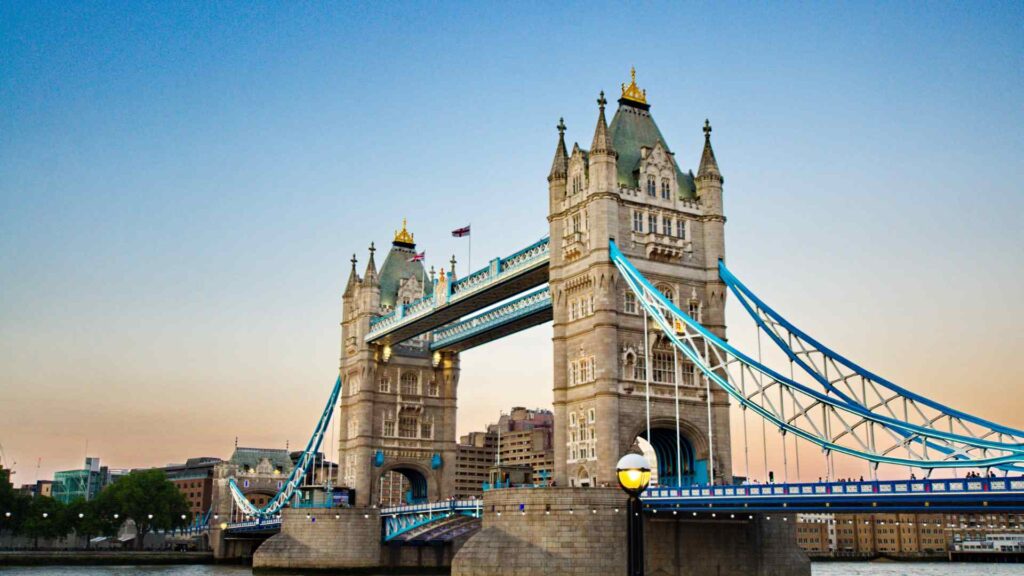Riddles spark curiosity and challenge our minds with clever twists and wordplay.
The “I Met a Man on the London Bridge” riddle is no exception, weaving intrigue with simplicity. In this ultimate guide, we’ll unravel its layers, explore interpretations, and equip you with tools to master it. Let’s dive in!
Understanding the Riddle
The riddle reads:
“I met a man on the London Bridge. He tipped his hat and drew his name. In this riddle, I told you his name. What’s his name?”
This puzzle captivates with its subtle clues. At its heart lies a play on language that misdirects and entertains.

The Importance of Context
Understanding the riddle requires dissecting its context. It’s not just about the words but also their arrangement and double meanings.
The mention of “London Bridge” adds an iconic cultural touch, grounding the mystery in a real-world setting that sparks familiarity.
Decoding the Clues
Breaking the riddle into parts can help:
- “I met a man on the London Bridge”
- Sets the scene and introduces the man.
- “He tipped his hat and drew his name”
- Suggests an action or characteristic clue.
- “In this riddle, I told you his name”
- Directly points out that the answer is embedded in the riddle itself.
Common Misinterpretations
It’s easy to overcomplicate riddles. Many think of famous names tied to London Bridge or try to decode complex meanings. However, the answer is simpler than it seems, relying on observation rather than external knowledge.

The Answer Revealed
The man’s name is Andrew.
Here’s how:
- “He tipped his hat” = A gesture of politeness.
- “And drew his name” = Hidden wordplay.
Combining “and drew” phonetically sounds like “Andrew,” revealing the man’s name.
Exploring Variations of the Riddle
This riddle has inspired countless adaptations. Variants often include different names or settings, but the core concept remains the same—finding the answer hidden within the question.
Why This Riddle is So Popular
The “I Met a Man on the London Bridge” riddle thrives because:
- Simplicity: It’s easy to remember yet challenging to solve.
- Universal Appeal: It engages people of all ages.
- Timeless Charm: Wordplay never goes out of style.
Tips for Solving Similar Riddles
- Break Down the Language: Analyze each word carefully.
- Look for Hidden Clues: Focus on phonetically disguised meanings.
- Keep It Simple: Avoid overthinking or adding complexity.
How to Use This Riddle for Fun and Learning
This riddle can be a great:
- Icebreaker: Perfect for social gatherings.
- Brain Exercise: Encourages critical thinking.
- Teaching Tool: Helps kids learn language patterns.

The History Behind London Bridge Riddles
London Bridge has long been a cultural symbol, inspiring rhymes, riddles, and folklore. Its iconic status makes it the perfect setting for wordplay and puzzles, evoking both mystery and nostalgia.
Psychology of Riddles
Riddles like this one challenge our brains by:
- Stimulating Creativity: Encouraging out-of-the-box thinking.
- Enhancing Memory: Recalling riddles exercises retention skills.
- Boosting Confidence: Solving puzzles instills a sense of accomplishment.
Fun Facts About Riddles
- The oldest known riddle dates back to Babylonian times.
- Riddles often appear in literature, from Shakespeare to Tolkien.
- They’re a universal phenomenon across cultures and languages.
The Role of Wordplay in Riddles
Wordplay lies at the heart of most riddles. Techniques include:
- Homophones: Words that sound alike but have different meanings.
- Puns: Playful twists on definitions.
- Anagrams: Rearranging letters to form new words.
Challenges of Creating Riddles
Crafting a good riddle involves balancing:
- Complexity: Challenging yet solvable.
- Engagement: Maintaining the solver’s interest.
- Clarity: Avoiding unnecessary confusion.
The Modern Revival of Riddles
Riddles have regained popularity thanks to:
- Social Media: Platforms like TikTok and Instagram make sharing riddles easy.
- Educational Apps: Gamified learning includes puzzles and brain teasers.
- Pop Culture: References in movies, shows, and games spark renewed interest.
FAQs
What is the answer to the riddle?
The answer is “Andrew,” derived from the phrase “and drew.”
Why is this riddle so famous?
Its clever wordplay and simple yet elusive answer make it memorable and engaging.
Can kids solve this riddle?
Yes, it’s a great exercise for critical thinking and language skills.
What other riddles are similar?
Riddles that use phonetic clues or hidden meanings, like “What has a head, a tail, but no body?” (Answer: A coin).
What skills do riddles improve?
Riddles enhance logical thinking, language comprehension, and creative problem-solving.
Is there a trick to solving riddles?
Look for clues in the phrasing and think outside traditional patterns.
Conclusion
The “I Met a Man on the London Bridge” riddle is a delightful example of how language can intrigue and entertain.
With its clever wordplay and timeless charm, it continues to captivate minds of all ages. Armed with the tips and insights from this guide, you’re ready to solve—and create—riddles with confidence.
